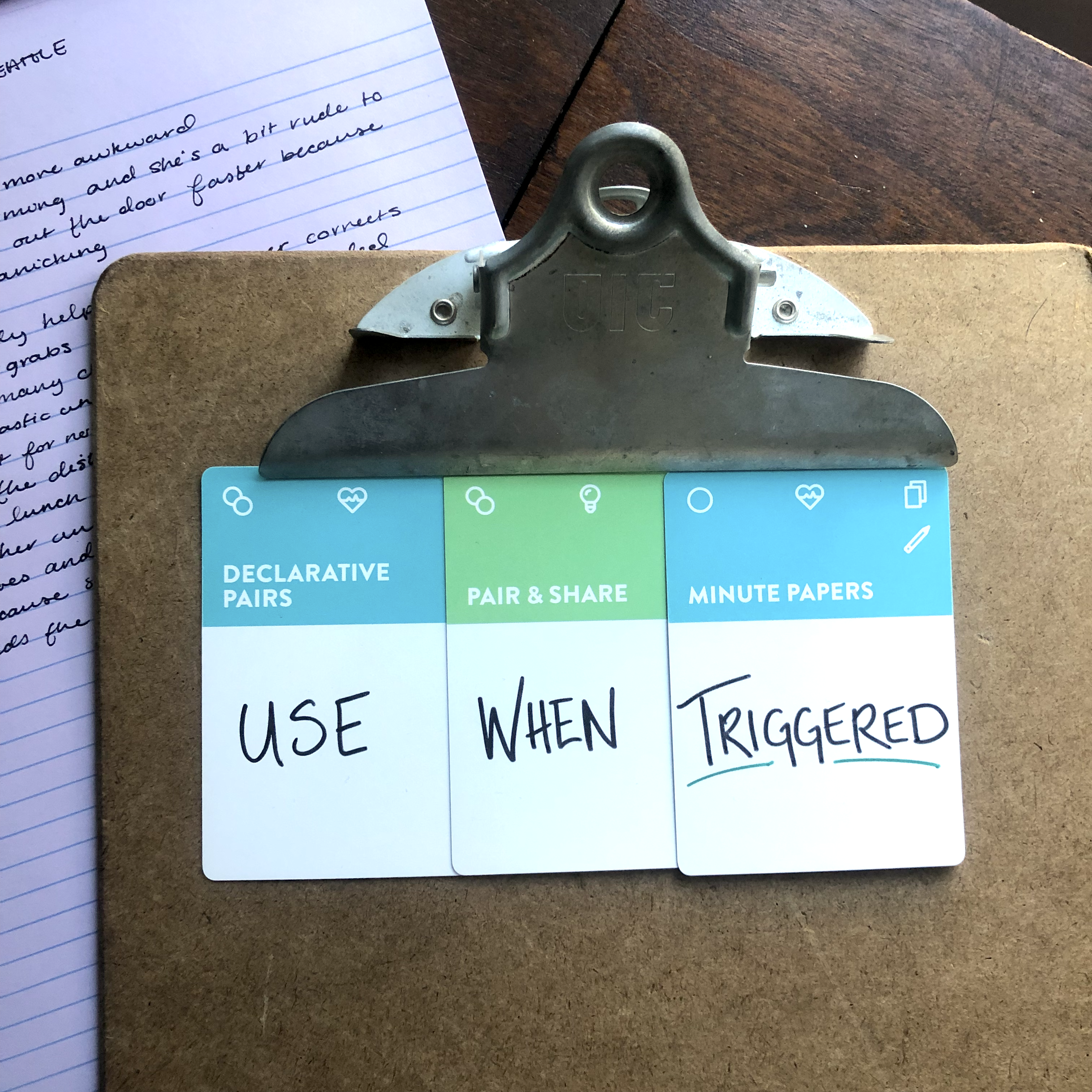At the Brain Jam last week we talked about understanding what happens when we get triggered and brainstormed different strategies we can use in those moments to come back to being present.
If you missed the Brain Jam and are curious about what happens when you’re triggered and strategies for navigating those moments we’ve got two ways for you to dig in.
The first is to watch the Jam!
The second is to read Ch. 9 of Unlocking the Magic of Facilitation called Triggers which you can download here: https://www.facilitating.xyz/chapter-9-unlocking-the-magic-of-facilitation-triggers/
Part 2: Navigating Triggers with Facilitator Cards
Our Brain Jam was just the start of us digging into navigating triggers as a facilitator, as we know there are many different ways we can prepare for those tricky moments.
Many of us encounter the same trigger over and over again, so it’s helpful in those moments to have specific plug-and-play strategies. By creating these ahead of time, when you’re in that moment you can help yourself (and your group) move through that trigger.
Having time to generate those plug-and-play strategies is the focus of our Part 2 Event: Navigating Triggers with Facilitator Cards Click! This is an event exclusively offered for Card Carrying Facilitators and you can learn all about the details here.
We’ll talk strategy, share our best practices, and work through different scenarios and the cards that can help us easily navigate through them.
If you want to know more about how Facilitator Cards come in handy in triggered moments, read on!
Bite-size information is really helpful when you get overwhelmed.
Preparing for a session is key, but when your agenda is a full-page written out on your Google Drive, it doesn’t feel all that helpful when you’re trying to quickly pivot or buying yourself a little bit of time to move through the moment.
Having physical Facilitator Cards laid out in front of you provides comfort, grounds your agenda, and is immediately adjustable, so you can reflexively respond and switch things up as you need.
Have backup options for when you are triggered.
Facilitator Cards make Plan-B’s super simple.

You don’t have to think creatively in a pinch, once you have your backup stack, you just need to pick a card!
Getting back to baseline
Every Facilitator Card has a key up at the top of the card to identify if the process should be run in pairs, small groups, full groups, or individually. When you need to create an instant plan to find peace, look for the individual or pairs icon up at the top!
Say you planned to do Spectrum Questions, swap it out for Pair & Share, Minute Papers, or Declarative Pairs to give yourself the space to get back to baseline while your participants can remain engaged without your guidance.
Plug-And-Play
If you know going into a session that there is a high chance of being triggered, one of our best tips to prepare is to create a go-to backup sequence. You can have a generic one (that you could use in any circumstance) or you could have a specific one for specific triggers that pop up.
Have your participants journal for one minute about how they are feeling, pair share their thoughts on what’s happened so far (or on a specific moment of time if you think the group was triggered too), and then finish up with an I Know vs. I Wonder list.
**
When we’re triggered as facilitators it can often feel like a very disempowering moment. It’s often hard to find resources and support when we have such a unique and particular role to play within a group. We hope that by better understanding what happens when we’re triggered, knowing our options, and building plug-and-play strategies we can start to feel more resourced for some of the trickiest parts of our job.
Hope to see you at our Part 2 Event in December!
Any questions? Email Meg at Meg@facilitator.cards
Until then, happy facilitating!
